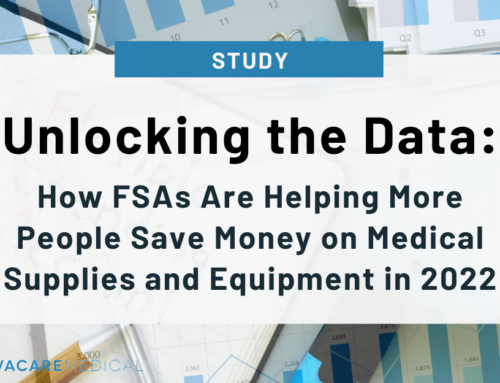A knee support can help with knee discomfort. It keeps the knee joint, and the ligaments and muscles around it from inflaming, edema, sprains, hamstring injuries, and other knee-related disorders can all be treated with them. It is not necessary to be hurt to wear it. They are a low-cost, effective, and safe way to avoid injury. Wearing knee wraps can aid athletes and sports fans lower their risk of injury.
Knee wraps provide additional support and stability and pain relief and treatment. Knee wraps, when used in conjunction with ice or heat therapy, can help strained joints and muscles heal faster. It makes them great for runners, weight lifters, basketball and volleyball players, and anyone interested in staying fit. They’re also beneficial to those who have had knee surgery.
Physical therapists and sportspeople alike need to know how to bandage a knee for pain treatment. You’ll need a bandage and other items to perform it properly, such as pain reliever spray or ointment. There are many different varieties of wraps. Traditional compression wraps, compression bandages, and customized proprietary wraps are all options.
When to wrap a knee
Wrapping an elastic bandage over the knee might help relieve knee discomfort and instability by giving external support to the joint. If you have osteoarthritis, which develops over time, wrapping the knee might be beneficial.
- Osteoarthritis
Knee braces are strongly recommended, especially for persons whose arthritis pain prevents them from walking without the assistance of an assistive device such as a cane. Knee bracing has been shown in clinical studies to support the knee joint, reduce pain, improve overall gait quality, and enhance knee stability.
An elastic bandage wrapped over your knee is a simple and effective approach to support your knee, and it can be quickly fitted and modified. Having arthritis means wrapping the knee and wearing a bandage all day to assist in walking and performing other weight-bearing tasks. Remove the bandage at night to avoid skin irritation and artery compression. Wrapping the knee can also help with blood flow returning to the heart in the early stages of healing from acute injury if swelling is present.
- Injury prevention
While knee bracing is strongly advised for people with severe osteoarthritis, there is no evidence that bracing or wrapping can help with other knee diseases. Clinical evidence reveals that knee braces, sleeves, or wraps aren’t indicated for treating patellofemoral pain, and there are no particular recommendations for or against knee wrapping for cartilage, meniscus, or ligament problems. Painkillers or pain relievers such as Advil, Motrin, or Aleve can help with this problem.
Wrapping the knee can help prevent injury by providing extra support and stability, especially while doing repetitive high-impact or joint-loading exercises like jogging, heavy squats, or leaping. If the knee only hurts during certain activities or using a knee wrap as a preventive precaution, it should only be wrapped during activity and removed after finished.
Benefits of knee wraps
Competitive weightlifters appreciate anything that makes it easier to lift large weights, and knee wraps are one of those things. The knee wrap tightens during the downward phase of their squat in addition to their abdominal binders and other compression garments, for example, allowing a large overflow of elastic energy to be reserved. This power is emitted during the upward stage, allowing to lift bigger weights during complex or Olympic movements like squats.
Knee wraps are also reported to relieve tension in the quadriceps tendon, connecting the quadriceps to the patella. The tendon pulls on the patella as they squat down. As a result, lowering tension on this tendon lowers the likelihood of tearing the quads, which they don’t want. When squatting, experienced and brave powerlifters utilize knee bandages to avoid major injury. Studies suggest that wearing compression wraps alters lifters’ horizontal movement, altering the targeted muscles.
Who should use a knee wrap?
Investing in a nice set of knee wraps is a great option for experienced lifters who want to enhance their weight lifting. Knee wraps are still an excellent investment, even being new to weight lifting but want to learn powerlifting or strongman movements later. You won’t wear them until you’ve established a solid physical base, which will take months, but having a pair is always a good idea.
Knee wraps should not be used by those who have had previous knee problems; instead, they should use a knee brace.
Steps for knee wrapping
Wrapping the knee with a tight bandage to keep it in place while providing slight compression without impeding movement or blood flow is the best way to do it. Most elastic bandages are between 2 and 6 inches wide and 4 to 6 feet long to provide enough length to wrap around the body numerous times. Here is the right order on how to properly wrap a knee:
- Wrap the bandage around the knee, starting at the outside of the knee and wrapping it around at the mid-calf.
- Wrap the bandage around the leg, doing some loops below the knee two to three times to establish an anchor, starting at the side of the leg and working the way to the front of the body.
- Pull the bandage up from behind the knee and across the outside of the leg diagonally toward the inner thigh above the knee after the wrap’s anchor is set. It is not the time to cross the wrap over the kneecap.
- Wrap the bandage once around in the calf after one round around in the thigh.
- Wrap the bandage diagonally from behind the knee to the front of the thigh, crossing at a diagonal on the outside of the leg after one loop around the calf.
- Wrap in an infinity or loop pattern by repeating steps 4 to 6.
- When the wrapped bandage is rolled the whole length, use a clip to lock the bandage in place by clipping the end of the bandage to a part of the knee wrap.
Final Thoughts
Wrapping the knee can provide extra stability and support to the knee, which can help relieve arthritic pain and reduce swelling after an injury, but it cannot cure or treat knee problems or injuries independently. Physical therapy supplies can help manage the symptoms and improve the capacity to utilize the knee joints by teaching how to do exercise to restore mobility without using any walking aids and strengthen the muscles around the knees.
The type of knee accessory you choose should be based on your specific fitness and health goals, as each has its own set of benefits and drawbacks. At AvaCare Medical, you can choose our great products, from compression bandages to orthopedic products that best suit you and your needs! For more information, please email us here at info@avacaremedical.com or contact us here at 1-877-813-7799.



